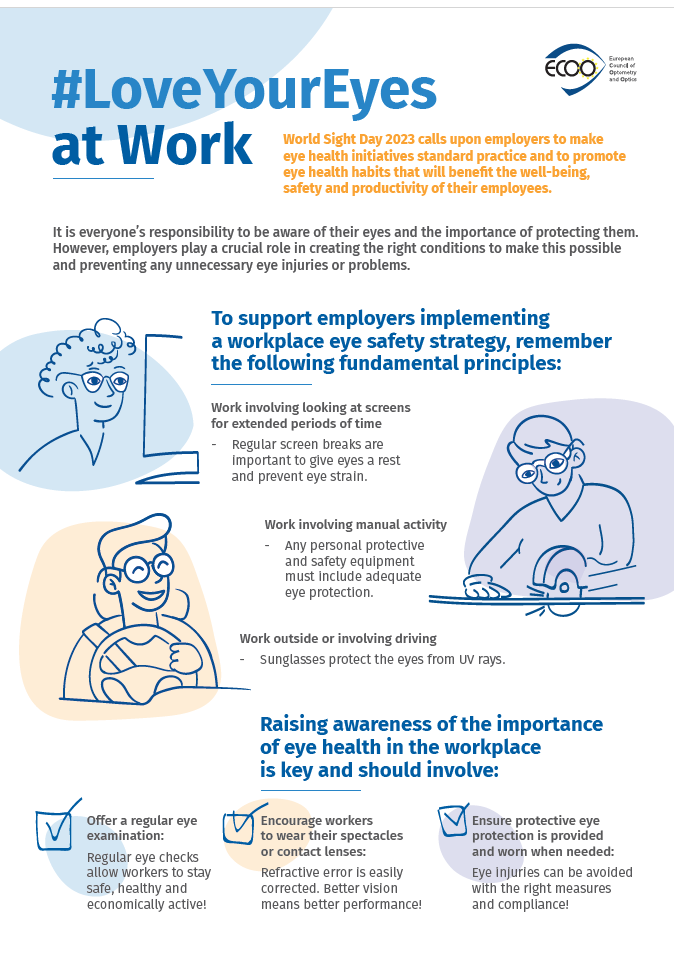This year’s World Sight Day, taking place on 12 October 2023, focuses on the importance of eye care in the workplace. ECOO has published this article and an infographic explaining why it is important to #LoveYourEyes at work.
The International Agency for the Prevention of Blindness (IAPB) “encourages employers to make eye health initiatives standard practice and promote eye health habits that will benefit the well-being, safety and productivity of millions of employees.”
As primary eye care providers and the first point of contact for people who encounter an issue with their sight, optometrists and opticians are an important part of the health care system.
Taking care of people’s eyesight and vision allows them to be active, remain in the workforce and be efficient. Whatever the job – whether it is manual, desk and screen based, of a mobile nature, or creative – the ability to see as well as possible is crucial. Employers have a responsibility to ensure that the right practices, information and provisions are in place to protect their employees’ eyes, while carrying out their work. But it is also in their own interests to do so.
Health and safety at work is an area that the EU has prioritised. The occupational safety and health “Framework Directive” guarantees minimum safety and health requirements at work. It is accompanied by further directives, such as the Display Screen Equipment Directive, which includes provisions on workers’ eye care and eyesight and their entitlement to an appropriate employer funded eye examination, which should be carried out by a person with the appropriate competency. Furthermore, the European Commission’s Strategic Framework on Health and Safety at Work 2021-2027 defines the key priorities and actions for improving workers’ health and safety.
In this context, ECOO is calling upon employers to ensure that supporting eye health is part of their company’s health and safety policy, which should include providing necessary protection, information and checks. Examples of what should be considered include:
- Ensuring regular breaks. Eyes need regular breaks from screens (or other focussed work): spending too long in front of screen-based devices causes eye strain and can also cause dry eye problems. Employers should therefore encourage employees to take regular screen breaks.
- Using proper eye protection. Safety equipment at work is not just high visibility clothing, safety hats or seat belts, it also includes appropriate eye protection for workers, including sun protection. Employers should ensure that eye protection is both provided and worn properly. It should be noted that prescription glasses and contact lenses alone are not appropriate eye safety aids in the workplace.
- Supporting eye care. It is in the interest of the employer that their employees have the best possible vision. In addition to any legal eye testing requirements, employers should include full eye examinations and assistance towards glasses/contact lenses in staff benefit packages. This will also make them more competitive employers.
It is everyone’s responsibility to be aware of their eyes and the importance of protecting them. However, employers play a crucial role in creating the right conditions to make this possible and preventing any unnecessary eye injuries or problems. Having in place, raising awareness of and implementing a workplace eye safety strategy needs to be a priority for all employers.
ECOO has created an infographic, “Love your eyes at work”, to facilitate this awareness raising work. You can download this article here.

